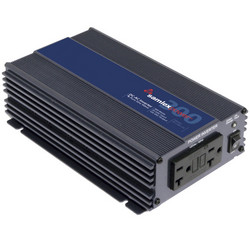CarterKraft
Red Skull Member
That's sort of confusing that the PWM controller can accept 55v but charge at 12v....
I was under the impression that the voltages have to be standard ranges in/out.
An example would be panels at 24v and batteries at 24v or panels at 36v and batteries at 36v
not 46v panels charging 12v batts. That is what MPPT is for.
I am not saying I am right just what I thought was right.
More reading maybe?
I was under the impression that the voltages have to be standard ranges in/out.
An example would be panels at 24v and batteries at 24v or panels at 36v and batteries at 36v
not 46v panels charging 12v batts. That is what MPPT is for.
I am not saying I am right just what I thought was right.
More reading maybe?


 doing some reading, the biggest reason the PWM is much cheaper than the MMPT is more or less the ~20% drop in efficiency for rv sized systems. with the occasional use that i've got, i'm happy to have some efficiency drop.
doing some reading, the biggest reason the PWM is much cheaper than the MMPT is more or less the ~20% drop in efficiency for rv sized systems. with the occasional use that i've got, i'm happy to have some efficiency drop.



 with $4/gallon gas, it probably saved me $50 not running the gen just this week so that should be a reasonably quick payback (~4weeks camping in total). more than that though, it was just easy.
with $4/gallon gas, it probably saved me $50 not running the gen just this week so that should be a reasonably quick payback (~4weeks camping in total). more than that though, it was just easy. I still don't have enough solar to run an AC unit sadly.
I still don't have enough solar to run an AC unit sadly.